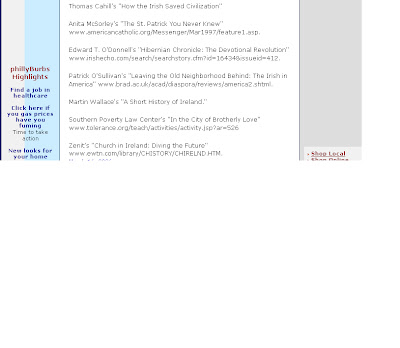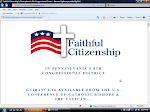


In the fifth century A.D., a teenager was kidnapped from Roman-Britain and enslaved in Ireland . Six years later, he escaped. He eventually returned as a bishop to the land of his captors. As per Anita McSorley, “These were people who still practiced human sacrifice, who warred with each other constantly & who were renowned as the great slave traders of the day.” Patrick’s influence on Ireland was phenomenal. His introduction of Christianity brought about a dramatic decline in war and murder, as well as an end to the slave trade. When the Roman Empire collapsed, it was through the monks of Ireland ’s monasteries that the writings of Western Civilization were preserved.
In the sixteenth century, King Henry VIII divorced himself and his empire from the Catholic Church. Subsequently, there were times when it was illegal to be a Catholic in England or her territories. So-called “penal laws” even succeeded – for a time – in lessening the influence of Catholicism in Ireland . Fourteen centuries after Saint Patrick, Edward T. O’Donnell tells us that “only 30 to 40 percent of the population attended Mass and many who identified themselves as Catholic had virtually no knowledge of the faith's dogma and practices….many still clung to pre-Christian pagan rituals and beliefs that had never fully died out after Ireland was converted to Christianity.”
As per the Southern Poverty Law Center, “Just before the English colonized America , they invaded Ireland and attempted to subdue its population of Catholic ‘savages’…. When a wave of Irish Catholic immigrants began arriving in the U.S. in the 1820s, they found a bitter welcome among the Anglo-Saxon Protestant majority….In some cities, such as Philadelphia, anti-Catholic and anti-Irish hatred erupted into violence….In the three days of upheaval [of May 1844], 20 people had been killed, scores more injured and two Catholic churches and more than 50 Irish homes destroyed….The nativist/Irish conflict erupted again in Philadelphia later that summer….This time, the death toll reached 13. Several months after these episodes, Philadelphia County complied with state law by repaying Catholics for damages incurred to their property in the mob violence.” In Pennsylvania of just two decades later, the Irish paid dearly to secure freedom in our nation. A cursory look at Gettysburg ’s tombstones reveals that Union victory was secured by their sacrifice.
Despite the “welcome” given to our forebears, events of mid-nineteenth century Ireland explain why they continued to come to America . From 1845 to 1850, 2.7 of her 8 million people died from the Potato Famine. As per Judy Ball, the late nineteenth century saw a profound impact on Irish character: “Into the vacuum created by the trauma of the Great Famine stepped a more public and assertive Roman Catholic Church….Mass attendance increased, devotion to the rosary flowered, seminaries and convents were built to prepare ever-growing numbers of men and women seeking to give their lives in service to God.” Armies of priests, religious brothers, and nuns were among those who emigrated to America . Through their devotion and self-sacrifice, numerous Catholic parishes, schools, hospitals, and social services were established. Because of the “Devotional Revolution,” Edwin T. O’Donnell tells us that “the Irish and their cousins in America had begun to achieve the now familiar reputation for their devotion to the Catholic Church.”
Irish-Americans have now become firmly entrenched in the middle class. Today’s Ireland – the so-called Celtic Tiger – also experiences great economic success. As per a Zenit interview with Father Vincent Twomey, “Though prosperity is to be welcomed, it has also given rise to consumerism. I get the impression that the energy Irish people once put into achieving the salvation of their own souls — and the souls of others — has now been channeled into creating heaven on earth.” On both sides of the Atlantic , economic success has been coupled with a decline in religious practice.
Archbishop Sean Brady spoke on the twenty-fifth anniversary of Pope John Paul II’s 1979 visit to Ireland : “For each new generation is a new opportunity to address the challenges of the present with the wisdom of the past….the Holy Father had spelled out that challenge. In quite prophetic words he prayed that prosperity would never ‘cause Irish men and women to forget God or abandon their faith.’ He pleaded that they would ‘remain faithful in prosperity to the faith they would not surrender in poverty’ ….the sense of reverence and respect for all that is sacred has diminished significantly in our society….[Yet] success does not have to be at the expense of the soul….The practice of virtue and a constant awareness of the presence of God can open up, rather than curtail the most creative and life-giving energies of the human person and society as a whole.”
The Catholic Church calendar designates March 17th to honor and remember Patrick. Displays of leprechauns (i.e., symbols from pre-Christian Ireland ) and excessive drinking dishonor Saint Patrick, as well as our forebears. A better way to honor both would be a recommitment to the great heritage which Patrick bestowed to us – an untiring devotion to God and recognition of the sanctity of human life.
(My references include
•Judy Ball’s “The Famine That Brought the Irish to America”
























